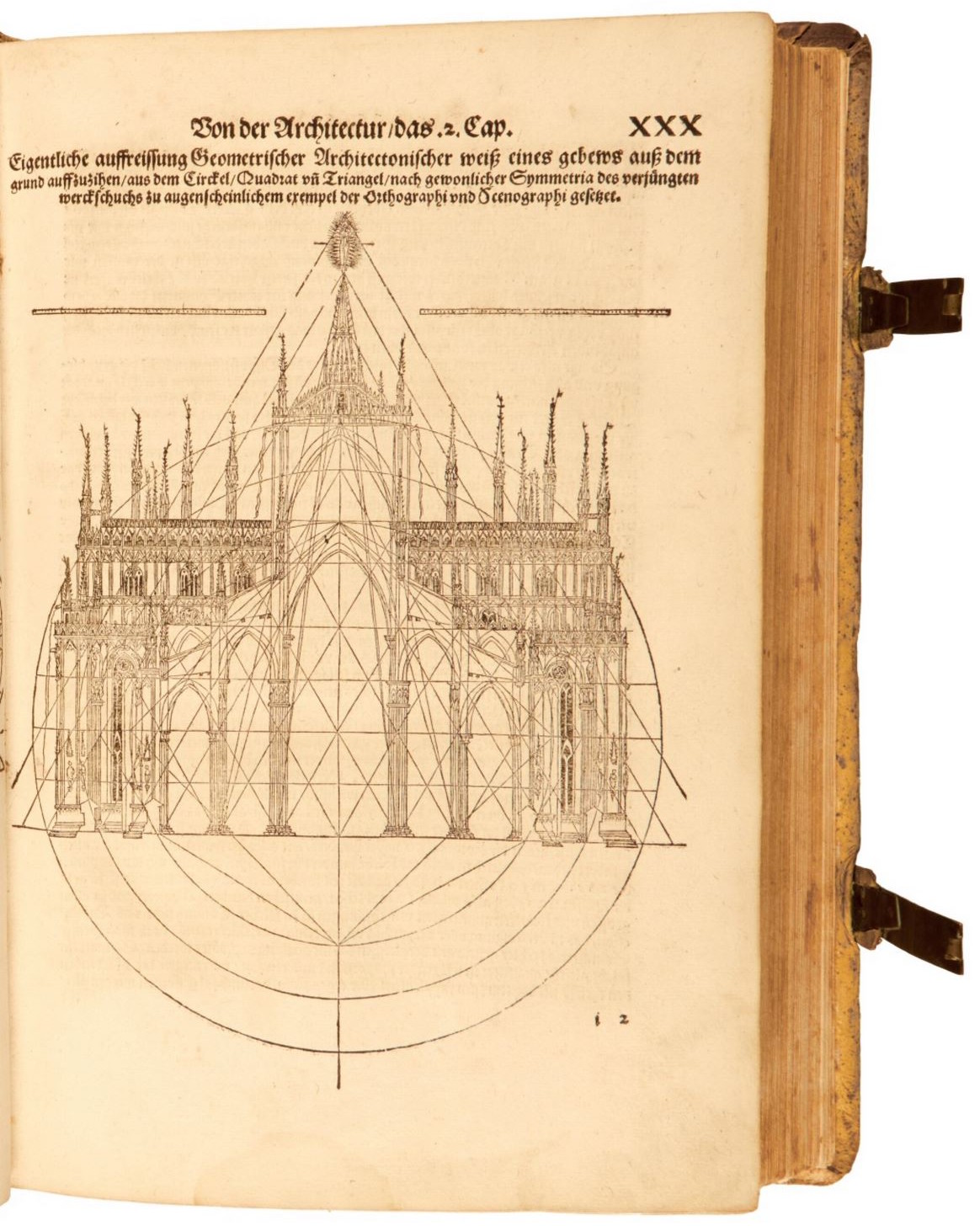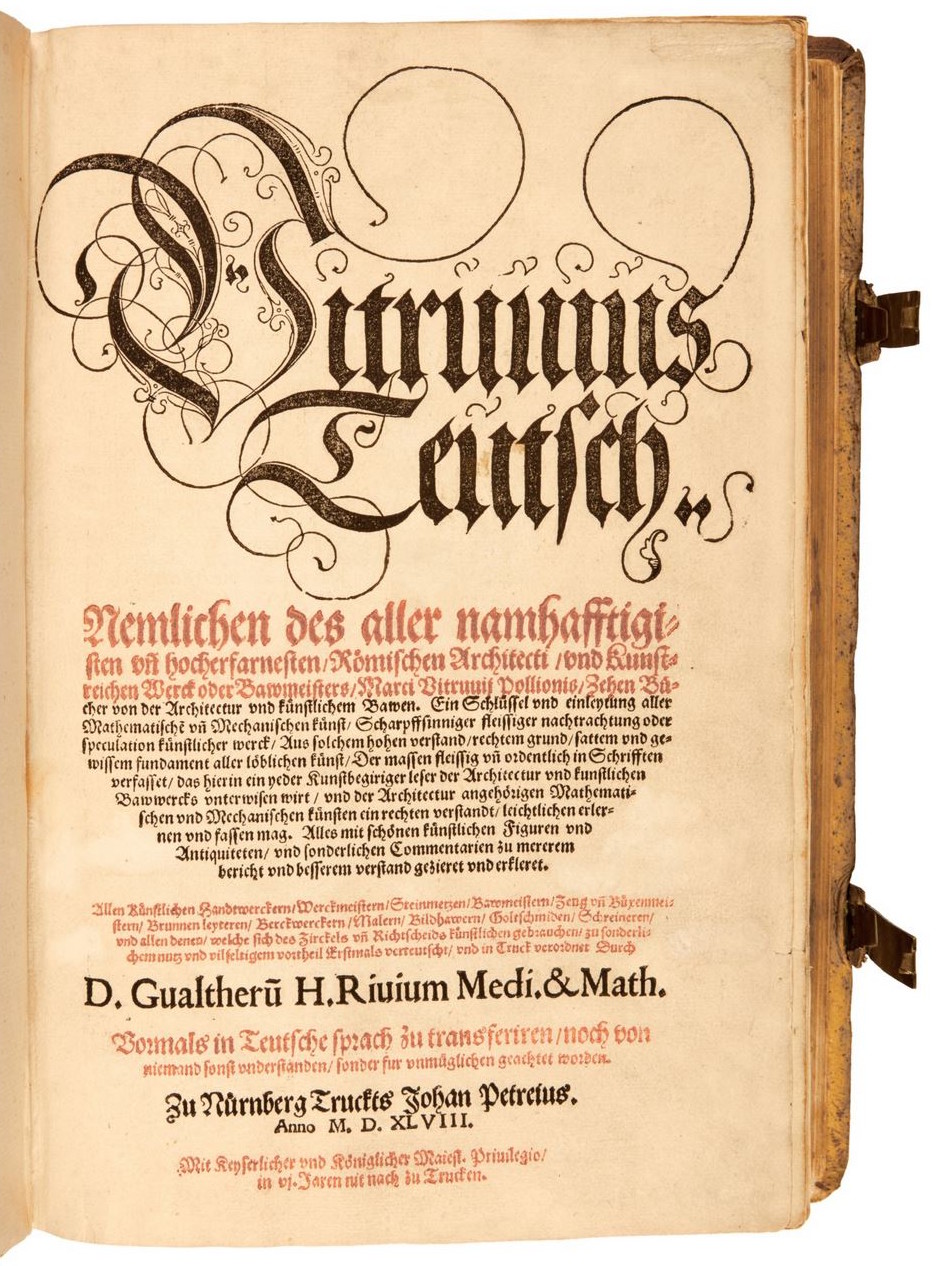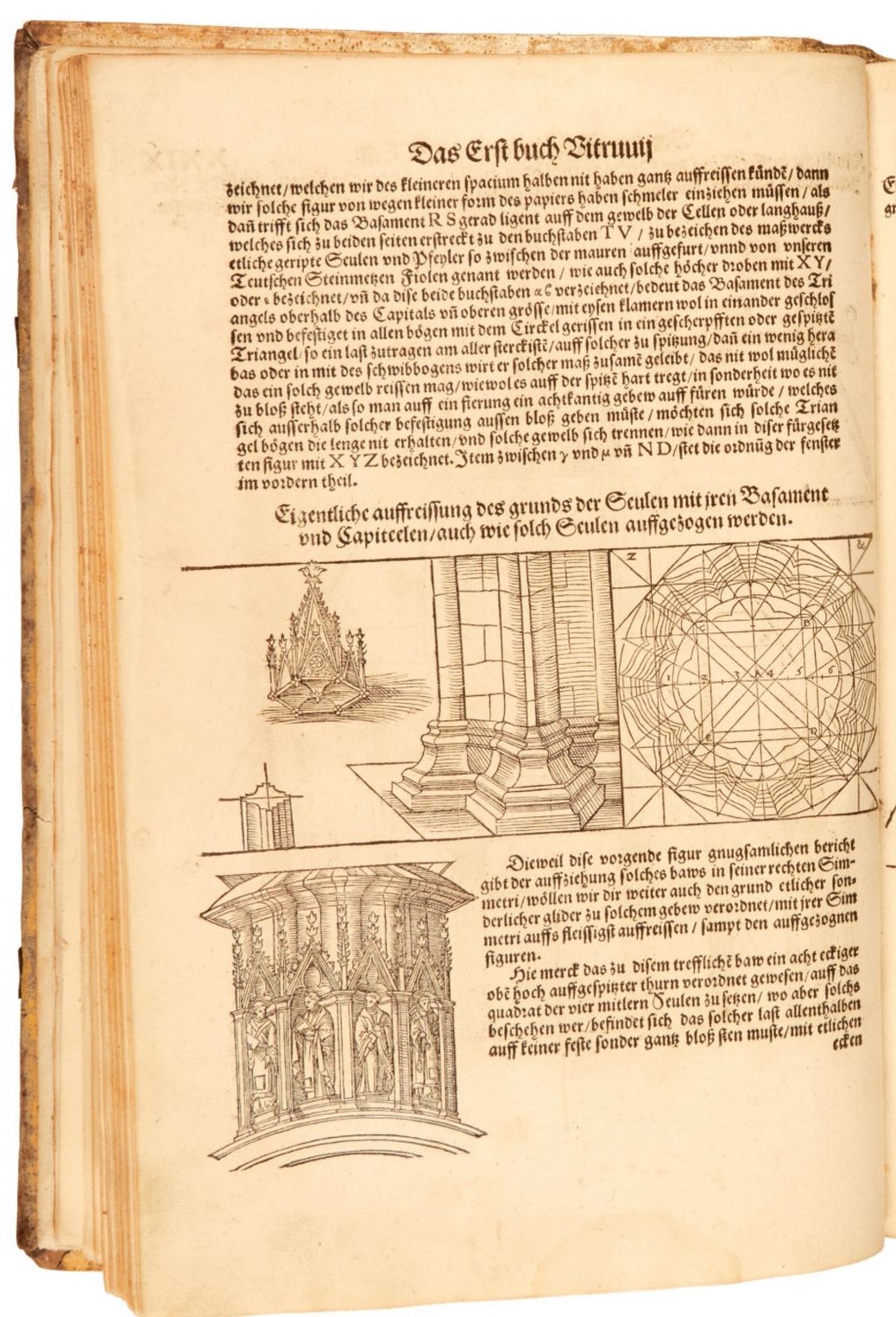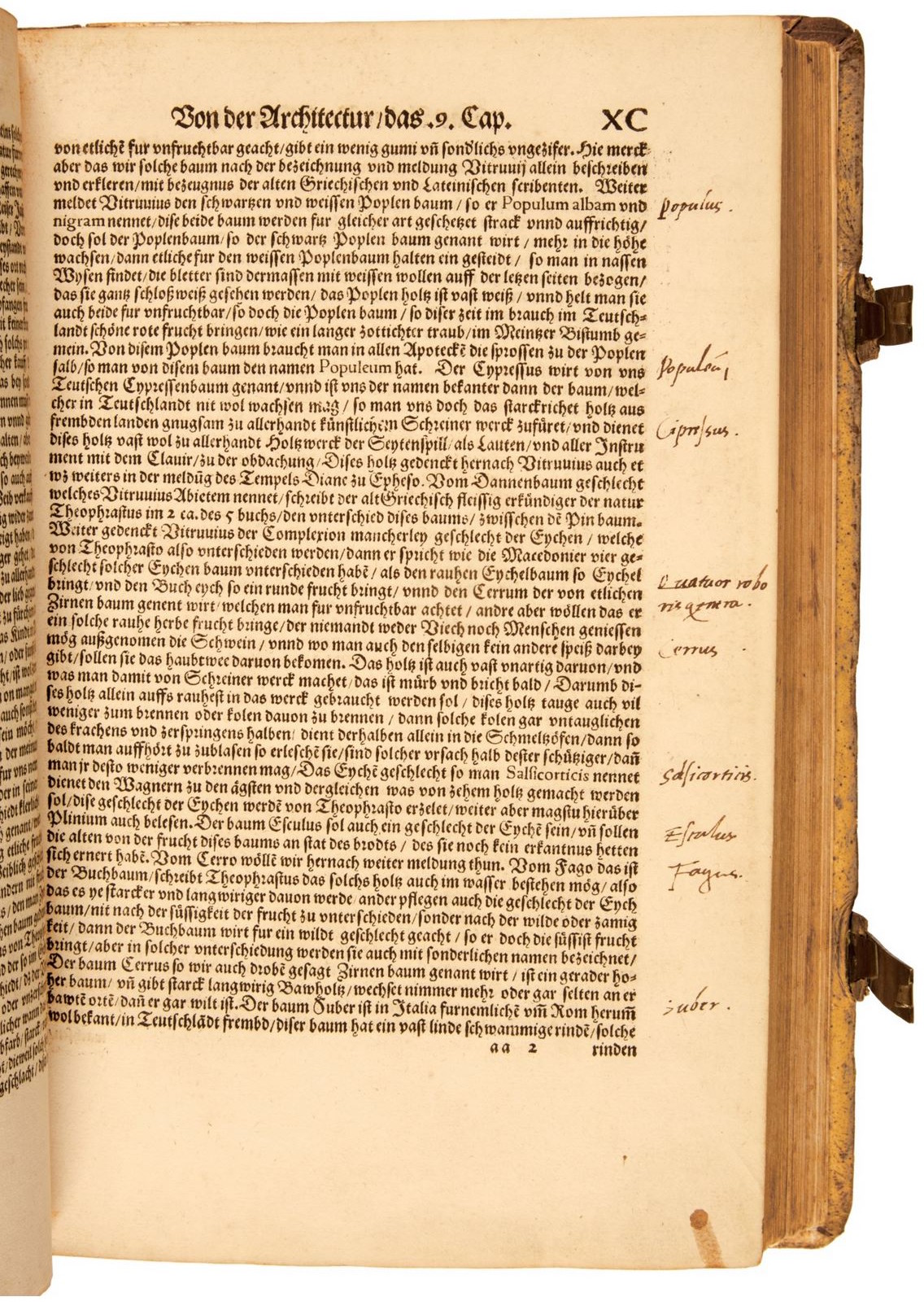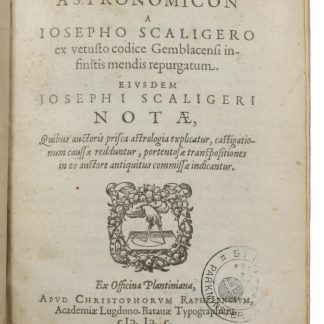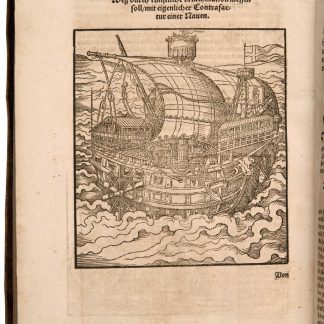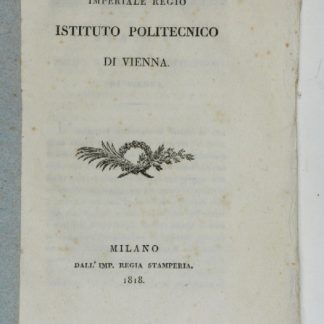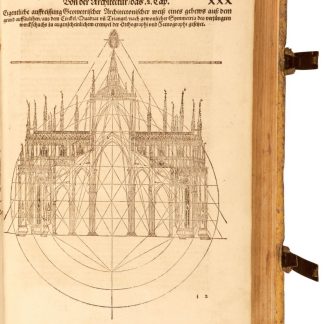The first German Vitruvius
Vitruvius Teutsch. Nemlichen des aller namhafftigisten un[d] hocherfarnesten, Römischen Architecti, und Kunstreichen Werck oder Bawmeisters [...] Zehen Bücher von der Architectur und künstlichem Bawen. Ein Schlüssel und einleytung aller Mathematische[n] und Mechanischen künst [...] Alles mit schönen künstlichen Figuren und Antiquiteten [...] gezieret und erkleret.
Folio. (18), CCCXX + (1) ff. Title-page printed in red and black; numerous woodcut illustrations in the text. Near-contemporary blind-tooled pigskin over wooden boards with 2 clasps. Housed in a modern slipcase.
€ 35.000,00
The first German translation of the only architectural treatise to survive from classical antiquity. Considered the supreme authority by Italian Renaissance architects, it became the single most influential work for the later development of European architecture.
The translation is by Walther Hermann Ryff (Rivius), who was responsible for two more architectural works in German, both printed by Petreius in 1547, as well as a Latin edition of Vitruvius from 1543. "The illustrations are attributed to Peter Flötner, Virgil Solis, Georg Pencz, Hans Brosamer and Erhard Schön, with initial letters by Hans Springinklee. They are mainly based on the 1521 Como edition, but many of the plates were used in Ryff's Bawkunst [1547]" (Fowler, p. 317f.), while some are ultimately derived from the 1499 "Hypnerotomachia Poliphili". Chipps Smith concludes that Flötner was the principal artist of the project and that his designs were followed by Solis and Pencz. "Excepting Serlio's 'General Rules of Architecture' of 1542, the 'Vitruvius teutsch' was the first significant architectural treatise published in German. Much of the technical information was still relevant to 16th century architects and artists" (Chipps Smith).
Thomas Kimball Brooker, oil industry executive (b. 1939), purchased in 1999 from Robin Halwas, London.
Folio (225 x 323 mm). Gothic type, 49 lines plus headline. (18), CCCXX + (1) ff. (collation: A-C4, D6, b-ffff4, gggg4+1, hhhh-mmmm4: gggg4v blank, a printing error corrected by the insertion of a leaf with blank recto and text from gggg4v printed on verso = 339 ff.). Title-page printed in red and black; numerous woodcut illustrations in the text. Near-contemporary blind-tooled pigskin over wooden boards with 2 clasps. Pastedowns with watermark Briquet 1506 (of the papermaker Wartenfels, near Kulmbach, used in Bamberg in 1603). Housed in a modern slipcase.
Binding somewhat rubbed, lower board with small neat repair at foot. Old inscription washed from title-page, woodcut on mmm2v very slightly shaved at outer margin, some marginal dampstaining. Marginal annotations in Latin in a humanist hand to aa2 and aa3r.
VD 16, V 1765. Fowler 404. Adams V 913. BM-STC German 898 (imperfect). Kat. der Ornamentstichslg. Berlin 1810. Schweiger II, 1262. Graesse VI.2, 378. Thieme/B. XII, 113; XXXI, 249. Poleni 66f. J. Chipps Smith, Nuremberg, A Renaissance City, 1500-1618 (1983), no. 136. Bange/Flötner, Meister der Graphik XIV, p. 20, No. 5. Röttinger, Die Holzschnitte zur Architektur und zum Vitruvius Teutsch des Walther Rivius. Not in BAL RIBA.

